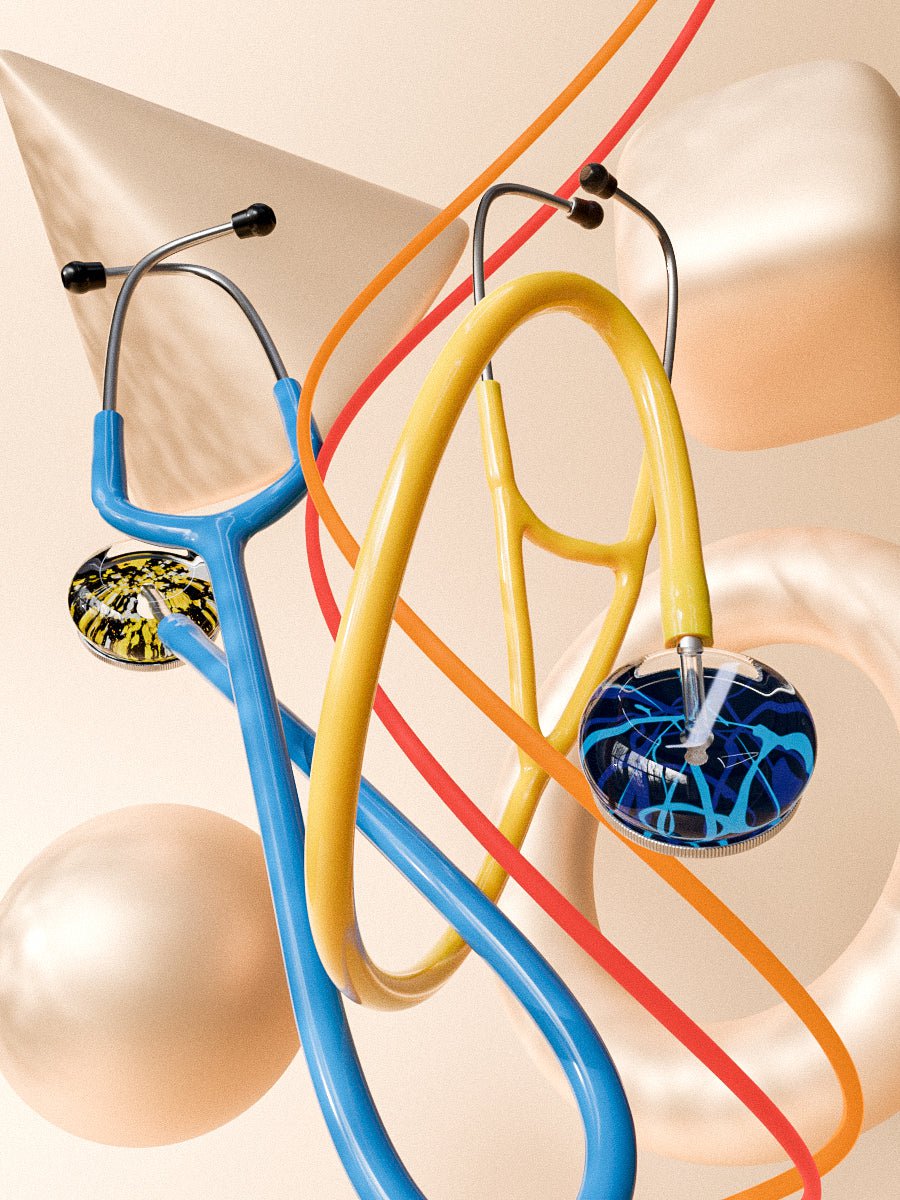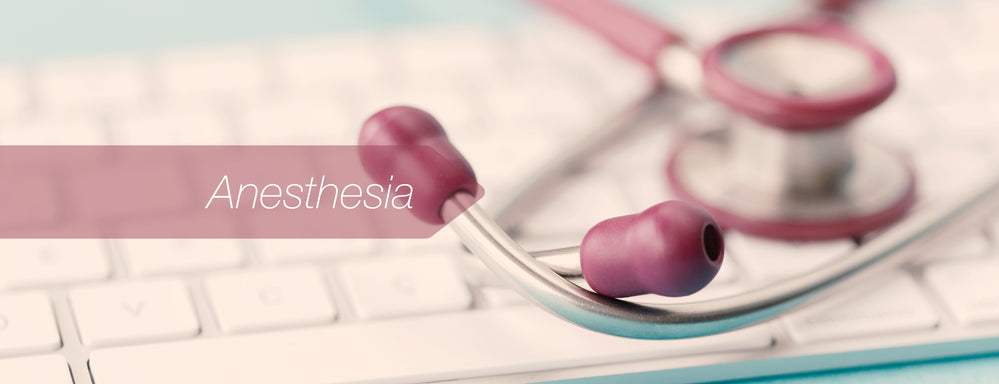You could be damaging your stethoscope unintentionally by how you handle it, hence reducing your ability to listen to the sounds from vital organs such as the heart and lungs when examining patients. You may have been wearing your stethoscope around your neck for many years without giving a second thought to the damage it might be causing, but one day, you’ll find that the tubing has cracked.
You might be asking yourself what you did to cause the crack to appear. At first, you may think that your stethoscope cracking is due to an accident, or that all the chemicals you have used in the hospital must have affected your device. Contrarily, the stethoscope could crack due to aging and deterioration, exposure to human sweat, and over-cleaning. You must take care of such pieces of vital equipment, keeping it out of harm's way. Once you notice cracks forming, it's definitely time to get a new stethoscope; however, we have outlined reasons why your stethoscope might crack and ways to minimize this problem.
The reasons why the tubing is prone to cracking
Contact with human proteins
Traditionally you may be tempted to wear your stethoscope over the bare neck as it makes it more easily accessible, and you can easily pull it out when attending to the patient. Moreover, disinfecting the stethoscope while it rests on the neck is easy, but it is not wise, as the PVC material used to make the stethoscope reacts to human skin, oils and follicles.
When the PVC is in contact with the skin, it could sap your bodily oils, making it hard and resulting in cracks that compromise the stethoscope‘s efficiency. It is best to have a container or case to put the stethoscope while not using it to preserve it from potential damage.
Cracks associated with alcohol sterilizers
Stethoscopes could crack from over-wiping, as alcohol-based sanitizers affect the PVC used to make stethoscopes. When you over ambitiously wipe the stethoscope, the alcohol could seep into the micro-cracks device, forming huge cracks on the tube. Moreover, the alcohol would eat away at the rubber overexposing the sensitive stethoscope parts, making it fragile and vulnerable to cracks.
Sun damage
Sun damage can crack your stethoscope as direct sun exposure makes the tube hard, which is easy to break. The stethoscope absorbs the UV rays from the sun leading to degradation. The residues broken down by the UV rays on the stethoscope will act as receptors that further damage the device. If your stethoscope stays in the sun for an extended period, the surface will appear chalky and become brittle and change color before cracking.
Chemical damage
Other factors could also make the stethoscope crack; for instance, when treating a patient, you are likely to use sanitizers that have additives that affect parts of the stethoscope. Moreover, if the stethoscope falls into fluids at work, it will likely deteriorate and crack. Other solvents used in the hospital contribute to cracking and problems for your stethoscope.
Additionally, water and other solvents could reduce functionality, such as the ability to clearly hear sounds when examining a patient. Extreme heat could affect the rubber melting it completely or hardening the PVC making the stethoscope crack. In addition to tubing beginning to crack, these factors could lead to additional damages to parts such as the diaphragm, non-chill bell sleeves, and ear tips.
How to Best Look after Your Stethoscope
The tubing on the stethoscope is the mostly pulled part of the device and is prone to deterioration, which reduces the device's longevity. PVC used to make the stethoscope hardens when exposed to weather elements and skin, and you could keep it in good health when you prevent it from exposure to these elements.
Moreover, it is wise to prevent bending and contortion on the tube as it wears the PVC. When you might occasionally keep the stethoscope in your pockets, you could knock it. It is better to put it in storage boxes that keep the tubes in good condition.
For hygiene and upkeep of the stethoscope, you can clean it regularly using warm water and soap. However, since the fluids easily damage the tube, it could be better to use a warm damp cloth instead of immersing it in water. It is wise to avoid alcohol, which could damage the tube. After washing the tube you can wipe off any fluids to prevent seepage and damage to the tube. You will need to sterilize the equipment frequently, and you will use an alcohol solution with 70% isopropyl solution. However, you should be careful not to submerge the stethoscope in the solution.
You can extend your stethoscope's life when you replace parts such as the earpieces that are easy to wear out, as well as carry hospital infections. Fortunately, your stethoscope will come with replacement pieces, and it would be wise to check with the manufacturer if you need additional replacements.
When not using the stethoscope, you could put it away in the box which it came in to avoid damage. You might be tempted to handle it frequently, exposing it to more damaging agents. If you do not have a storage box, you should be able to purchase one from the manufacturer. Even if you do not have a storage box, it would be wise to keep the stethoscope in a cool, dry place.
Routinely check if the stethoscope is working by pressing the diaphragm and listen to the earpiece. A functional stethoscope will allow you to feel the pressure whereas a faulty one will not. The poor sound quality could result from improper headset alignment. Fortunately, you can replace any malfunctioned parts before the whole stethoscope becomes faulty.
What you can do to prevent the cracking from occurring
You can prevent cracks on your stethoscope by reducing exposure to your skin, which contains oils that could damage the tubing. If you cannot keep the stethoscope away from your neck, you should ensure that it is placed over a barrier such as a collar that prevents potential damage to the device.
If you cannot prevent the stethoscope from sun exposure, you can use sun blockers such as polyolefin or nylon that prevents UV absorption. When buying a stethoscope, choose the quality made of UV-resistant plastics like acrylic and polyvinylidene fluoride. UV-resistant material is unlikely to get sun damaged, leading to the prolonging of the life of your equipment.
The bottom line
You may be used to having your stethoscope around your neck at all times. Unfortunately, skin fluids and oils will damage the stethoscope making it stiff and easy to crack. Moreover, when you place it in your pockets, you will be bending it, creating lines of weakness that make it break easily. It is best to store the stethoscope in a cool place away from damaging fluids.
Additionally, since it is prone to damage from direct sunlight, you can buy those made with materials highly resistant to sun damage, especially if you work under sunny conditions. Overly, better management and caring for the stethoscope will improve its longevity.





